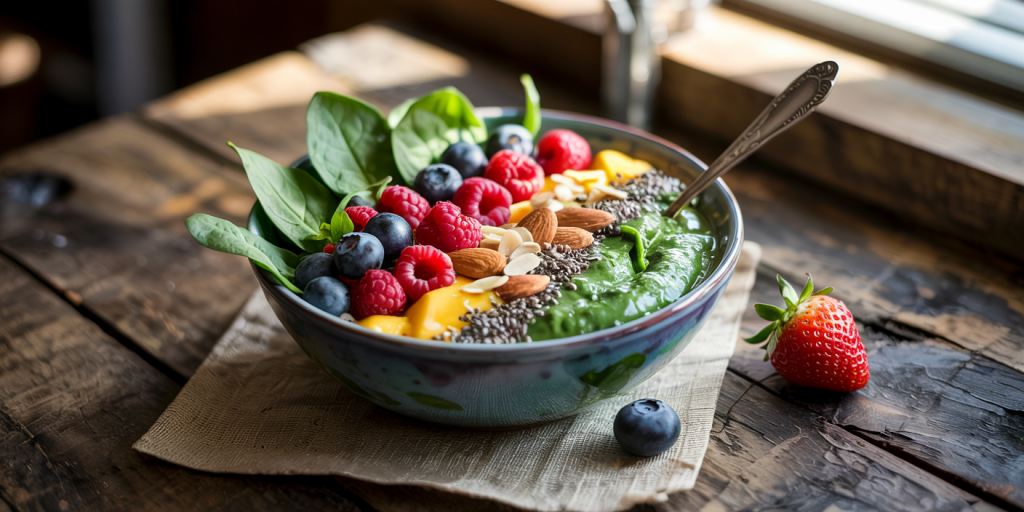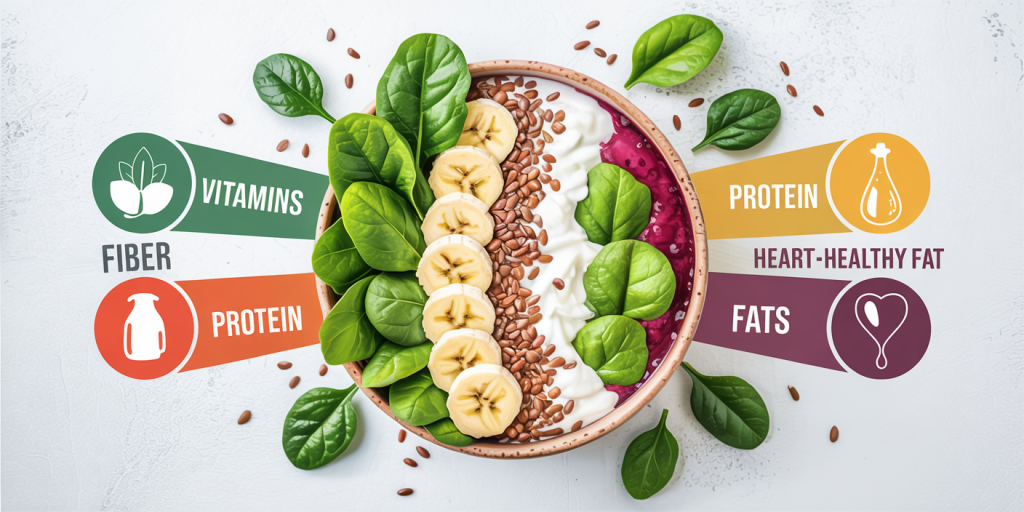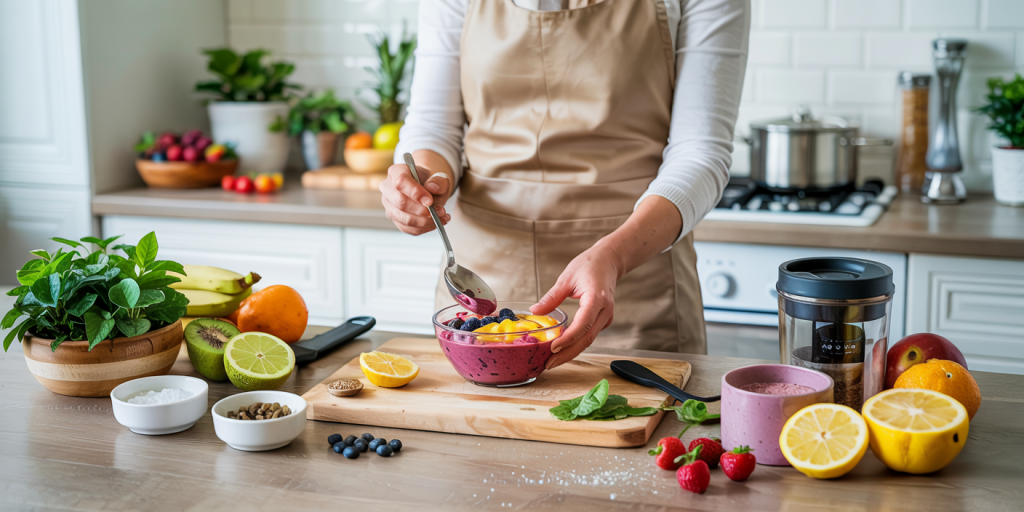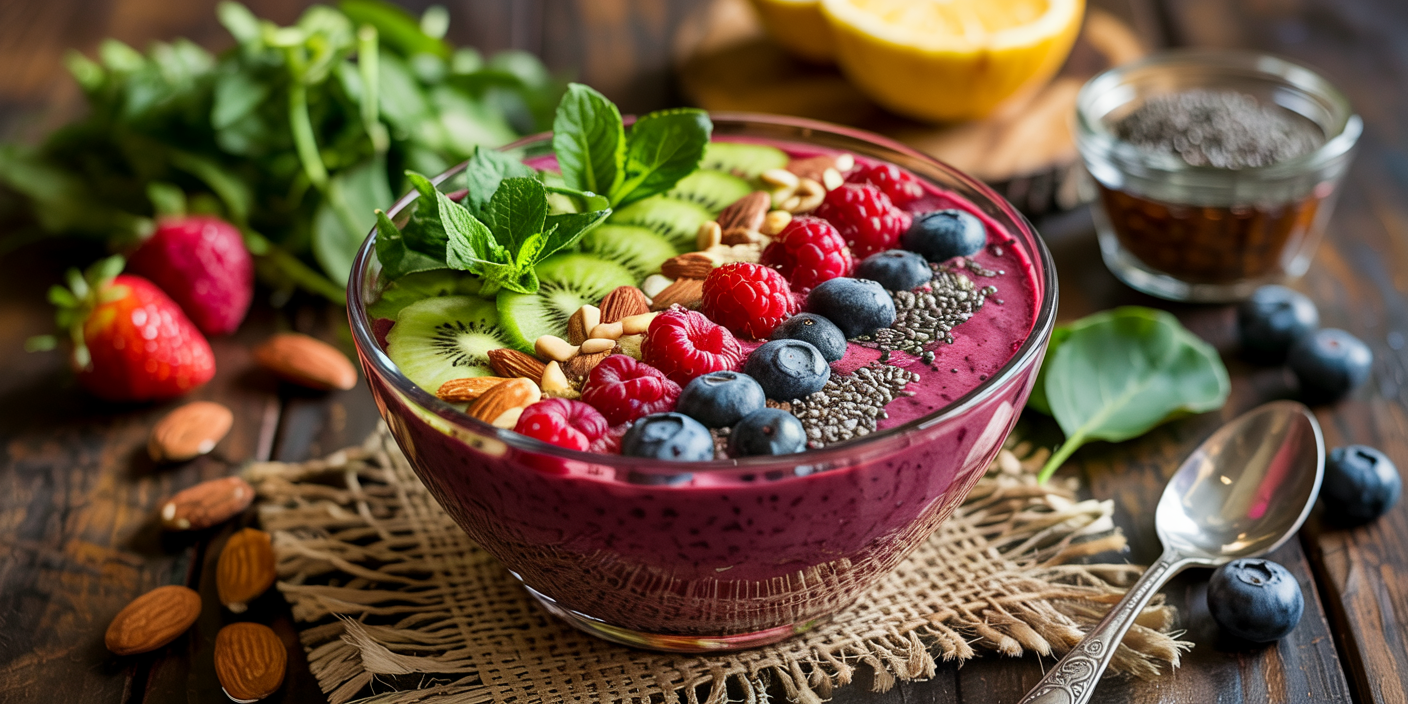In recent years, smoothie bowls have surged in popularity among health enthusiasts and foodies alike, celebrated for their vibrant colors, nutrient-dense ingredients, and versatility. Unlike traditional smoothies, smoothie bowls present a thicker consistency that allows for an array of toppings, combining texture and taste while delivering a powerful vitamin and mineral boost. This article explores the world of healthy smoothie bowl recipes, emphasizing the nutritional benefits, techniques for preparation, and practical examples that can easily fit into any lifestyle.
Smoothie bowls are an excellent breakfast or snack option for those looking to improve their diet without sacrificing flavor. They blend fruits, vegetables, nuts, and seeds into a creamy base, often enriched with superfoods or protein powders. Moreover, the customizable nature of smoothie bowls makes them suitable for individuals with different dietary preferences and restrictions. According to a recent survey by the International Food Information Council (IFIC), 60% of consumers seek nutrient-dense meals and snacks, with smoothie bowls perfectly fitting this demand.
Nutritional Benefits of Smoothie Bowls
The foundation of any healthy smoothie bowl is its nutritional value. These bowls typically include fruits rich in antioxidants, vitamins, and dietary fiber, such as berries and bananas. They often incorporate leafy greens like spinach or kale, which are powerful sources of vitamins A, C, and K, as well as folate and iron. Adding Greek yogurt or plant-based protein powders provides an essential protein boost, promoting satiety and muscle repair.

Dietary fiber is a key component in smoothie bowls that supports digestive health and blood sugar regulation. For example, chia and flax seeds commonly used as toppings or blended into the base contribute both soluble and insoluble fiber. According to the American Heart Association, increasing dietary fiber intake reduces the risk of heart disease and improves cholesterol levels. These functional ingredients make smoothie bowls a balanced meal, combining macronutrients with vital micronutrients, ideal for maintaining energy throughout the day.
Crafting the Perfect Smoothie Bowl: Techniques and Tips
Creating a perfect smoothie bowl requires attention to texture, flavor balance, and nutrient density. Achieving a thick consistency is crucial not only for presentation but also for holding toppings without them sinking. A practical approach is using frozen bananas or avocados as a base, which adds creaminess and natural sweetness without additional sugars.
The blending process is key; starting with liquid ingredients like almond milk or coconut water prevents over-blending and ensures a smooth finish. Adding powders such as spirulina, maca, or collagen can enhance functionality depending on individual health goals. When selecting toppings, aim for a variety—textures like crunchy nuts, chewy dried fruits, and fresh berries create a multi-sensory eating experience.
Consider the following comparative table showcasing key ingredients and their attributes frequently used in smoothie bowls:
| Ingredient | Key Nutrients | Benefits | Texture Impact |
|---|---|---|---|
| Banana (frozen) | Potassium, Vitamin C | Adds creaminess, energy booster | Creamy, smooth |
| Spinach | Vitamin K, Iron | Supports bone health and oxygen transport | Leafy, soft |
| Chia Seeds | Omega-3, Fiber | Heart health, improves digestion | Crunchy, gel-forming when soaked |
| Greek Yogurt | Protein, Calcium | Muscle repair, bone strength | Creamy, thick |
| Berries (blueberries, strawberries) | Antioxidants, Vitamin C | Anti-inflammatory, immune support | Juicy, slightly tart |
| Almond Butter | Healthy fats, Vitamin E | Brain function, skin health | Creamy, nutty |
This table helps understand how combining various ingredients can elevate the overall nutritional content and sensory appeal of smoothie bowls.
Five Delicious and Healthy Smoothie Bowl Recipes
To put knowledge into practice, here are five nutrient-packed smoothie bowl recipes tailored to diverse tastes and dietary needs:
1. Berry Antioxidant Bowl Ingredients: 1 cup frozen mixed berries, 1 frozen banana, ½ cup almond milk, 1 tbsp chia seeds, topped with sliced almonds and fresh blueberries. This bowl is rich in antioxidants that combat oxidative stress, while the chia seeds provide fiber for digestive health.
2. Tropical Green Delight Ingredients: ½ cup frozen pineapple, ½ cup frozen mango, 1 cup spinach, 1 frozen banana, 1 tbsp flaxseed meal, topped with shredded coconut and kiwi slices. Ideal for those seeking immune-boosting vitamins and minerals with a tropical twist.
3. Chocolate Peanut Butter Power Bowl Ingredients: 1 frozen banana, 1 tbsp unsweetened cocoa powder, 1 tbsp peanut butter, ½ cup oat milk, 1 scoop plant-based protein powder, topped with cacao nibs and sliced strawberries. This dessert-inspired bowl caters to chocolate lovers needing a protein-packed post-workout snack.
4. Creamy Avocado Lime Bowl Ingredients: ½ avocado, 1 frozen banana, juice of 1 lime, ½ cup coconut milk, 1 tbsp hemp seeds, topped with pumpkin seeds and pomegranate arils. Avocado adds heart-healthy fats, while lime introduces a refreshing citrus flavor.
5. Beetroot Berry Bowl Ingredients: ½ cup cooked beetroot, 1 cup mixed frozen berries, ½ cup Greek yogurt, 1 tbsp chia seeds, topped with granola and fresh raspberries. Beetroot enhances blood flow and is combined with berries for a nutrient-dense, vibrant bowl.

These recipes exemplify how versatile and accessible smoothie bowls can be, proving beneficial whether consumed for breakfast, lunch, or as a revitalizing snack.
Practical Applications and Case Studies
A notable example of smoothie bowl success is seen at wellness-focused cafes across the United States, where establishments like “Nourish Bowls” in California have reported a 30% increase in customer sales after introducing a range of smoothie bowls enriched with adaptogens such as ashwagandha and maca. These ingredients appeal to consumers seeking natural stress relief and enhanced energy.
Similarly, a 2022 randomized control trial published in the *Journal of Nutrition & Dietetics* evaluated a group of office workers consuming a daily smoothie bowl for four weeks. Results indicated improved satiety, stabilized blood sugar levels, and a 20% increase in daily fruit and vegetable intake among participants compared to a control group consuming regular breakfasts.
These real cases endorse smoothie bowls as an effective tool not only for personal health improvement but also for business innovation within the health food industry.
Comparative Table: Smoothie Bowls vs. Traditional Breakfast Options
To further emphasize the advantages of smoothie bowls, consider this comparison with common breakfast foods:
| Breakfast Option | Calories (avg.) | Protein (g) | Fiber (g) | Sugar (g) | Health Benefits |
|---|---|---|---|---|---|
| Smoothie Bowl (berry-based) | 350 | 12 | 8 | 20 | High antioxidants, satisfying |
| Bowl of Oatmeal | 150 | 5 | 4 | 1 | Heart-healthy fiber, low sugar |
| Bagel with cream cheese | 300 | 10 | 2 | 5 | High carbs, low fiber |
| Breakfast cereal (sweetened) | 200 | 3 | 2 | 15 | Often high in added sugars |
The table highlights that smoothie bowls strike a balance between protein, fiber, and natural sugars, making them superior to many traditional breakfast choices prone to high sugar or starch content with low nutrient density.
Future Perspectives: Innovations in Smoothie Bowls
Looking ahead, healthy smoothie bowls stand poised for continuous innovation fueled by trends in superfoods, sustainability, and personalized nutrition. The growing interest in plant-based diets encourages experimentation with novel ingredients like algae powders, mushroom extracts, and fermented bases rich in probiotics. These additions aim to further enhance gut health and immune function.

Technology is also playing a role; apps and smart kitchen appliances enable users to tailor recipes based on macronutrient needs, allergies, or even genetic profiles. As awareness around food sustainability grows, sourcing local, organic, and seasonal produce for smoothie bowls will become more prominent, reducing environmental impact while boosting flavor and nutrition.
Moreover, the commercialization of smoothie bowls is likely to expand beyond cafes into ready-to-eat meal services and nutrient-fortified products, catering to busy professionals and health-conscious consumers globally.
In conclusion, healthy smoothie bowl recipes represent more than just a meal trend—they offer a dynamic, nutritious platform to harness the power of whole foods. With endless customization options backed by scientific evidence supporting their benefits, smoothie bowls serve as an approachable, tasty solution for improving dietary habits and supporting long-term health. As innovation continues and consumer demand intensifies, smoothie bowls will remain a staple of modern wellness culture for years to come.

Deixe um comentário